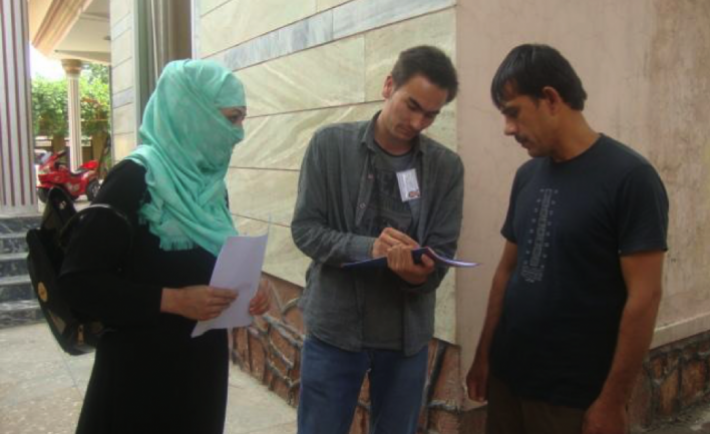The Next Big Step for Campaigns: Taking Mobile Canvassing Technology on the Road

written by Kate Cyr
“Data is what makes or breaks campaigns,” says Chris Doten, NDI’s senior manager for technology and innovation. “Knowing the voting population, what they like, don’t like, where you should be focusing your efforts -- that’s what drives how candidates and their staff interact with the community.”
Canvassing, an organized system of face-to-face citizen outreach, has long been used by politicians and advocacy groups to encourage constituents to vote, assess the habits and preferences of voters, and gather public opinion data. The time-honored tradition of knocking on doors remains an integral part of campaigns, though new mobile technology is starting to change the way canvassers operate on the ground.
Traditionally, field canvassers navigate constituent interviews with help from hefty question guides. The process can be difficult -- follow-up questions change based on an interviewee’s answer, and finding the right question may mean wasting time on awkward page-turning. Taking notes on constituents poses another problem, as canvassers may record things illegibly or in an incorrect shorthand.
For field organizers in advocacy and political campaigns, the logistics of sending canvassers into a community offer challenges as well. Canvassers may get lost, accidentally cover the same ground twice, slack off during a shift or falsify responses. Organizers have to devote time to creating routes, printing maps and logging canvassers’ data every day.
Technology is offering campaigns a more streamlined and accountable way to gather information without removing the face-to-face element of canvassing. On July 23, NDI hosted Emma Gibbens of Organizer Inc. to discuss how her company’s applications can change these interactions for the better.
Canvassers can now use mobile phones to mark territory, get directions and even conduct interviews. Instead of rifling through a manual, an app can set up the proper question flow automatically and eliminate the complications of reading and cataloguing the indecipherable shorthand of a canvasser. Organizer also allows a manager to record canvassers’ locations to make sure they stay on track.
NDI has a history of using and sharing innovative technology during campaigns and elections. During Tunisia’s November 2014 elections, NDI piloted the use of tablets during election observation, testing their ability to make data collection and organization more efficient for election monitors as they reported back from the field. For Nigeria’s April 2015 elections, NDI utilized tablets in a similar way, as well as incorporating tools for data visualization and management. NDI has also experimented with using mobile phones when collecting election monitoring data.
In new and developing democracies, understanding the needs and opinions of voters is crucial for keeping elected officials and candidates in touch with -- and accountable to -- the public. Integrating a mobile canvassing system would allow field managers and canvassers to more efficiently gather data and feedback from constituents. Get-out-the-vote efforts would become more systematized and effective, which is especially important in chaotic election environments.
Many groups in developing democracies and are not yet canvassing with mobile technology - often because smartphones are not readily available. However, Doten is looking a few years down the line to when almost everyone will have a smartphone.
“Very few NDI partners are currently using citizen databases for managing outreach to their communities. NDI is already moving in this direction with its support for the CiviParty DemTool, which manages contacts, voters, and volunteers,” Doten explained. “With this system, the next step is to gather data more effectively and send it to field staff and activists in real time. That’s where mobile canvassing can be of use.”
